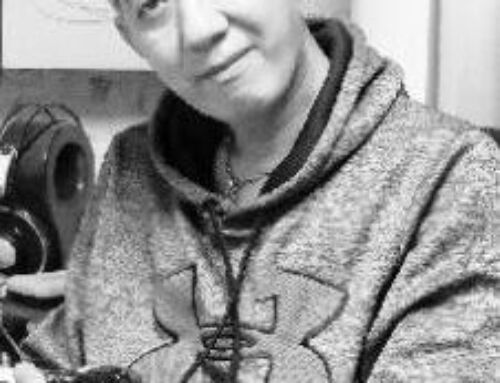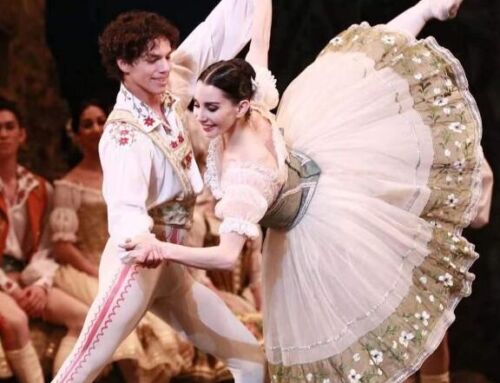Project Description
In Han Jun’s collection, if there is anything that outnumbers photo albums, it must be records. His love for music began with his obsession with “Jean-Christophe” during his adolescence. At that time, he hadn’t even listened to Beethoven yet. All he could remember was the sense of music permeating every line of the book. The narrative structure, from birth to youth, to prime of life, and to old age, is just like a symphony.
In his early years, Han Jun didn’t live in Wangjing but in Dengshikou, which was very close to the China National Publications Import & Export (Group) Corporation Foreign Language Bookstore. It had already become a habitual pastime for him to visit the bookstore from time to time in the 1980s and 1990s. At that time, a large part of the traditional bookstores’ business was selling cassette tapes. Not far from the foreign language bookstore, there was also an educational bookstore. Back then, cassette tapes were all called “internal materials”, costing five or six yuan per box. But in those days, five or six yuan was no small amount. In Han Jun’s memory, he had bought Karajan’s recordings of Beethoven’s Symphony No. 3, Symphony No. 5, and Symphony No. 9. He also started listening to Brahms and Tchaikovsky from cassette tapes.

Looking back, his experience with records dates back to the 1990s. The most expensive records among the first batch that Han Jun bought were just over 90 yuan each, and the cheaper ones were around fifty or sixty yuan. His investment in records is around three to four hundred thousand yuan, not including audio equipment. After transitioning from cassette tapes to records, he now plays Blu-ray discs for even higher audio quality.
“Actually, there were many musicians that I didn’t know originally. It was through music festivals that I got to know them and started listening to their music, and then went on to hunt for their records, like Paulding. Before attending music festivals, when collecting CDs, I always followed the Penguin Guide to Recorded Classical Music, picking the ones with three stars and a flower.”

The artists as perceived by the photographer can be best understood in their playful hearts when they are waving their bows or raising and lowering their batons. After being fully immersed in music and becoming highly proficient, they add even more individuality to their works. “The most interesting one was the violinist Nigel Kennedy. He was witty and fond of drinking. During the 17th Music Festival, when Charles Dutoit and the Shanghai Symphony Orchestra jointly presented Richard Strauss’s one-act opera ‘Elektra’, the rehearsals were especially interesting. Maestro Dutoit always made funny faces, completely without the airs of a maestro. And then there was ‘the Tsar’ Valery Gergiev. As early as the 1st Beijing International Music Festival in 1998, he led what was then called the Kirov Symphony Orchestra of Russia to perform in Beijing. At that time, he looked quite humble.” Han Jun recalled with great interest.

In 2001, at the 4th Beijing International Music Festival, violinist Maxim Vengerov came to the Beijing International Music Festival for the first time. Subsequently, in 2004, he cooperated with the Verbier Festival Orchestra at the closing ceremony. Eight years later, in 2012, he came to the festival again for the opening ceremony of the 15th edition. Through the lens of the photographer, one could see the growth of the artist. Han Jun recalled, “The most striking impression was that when Vengerov came for the first time, he mostly chose virtuosic short pieces. When he came for the second time, he began to play large-scale works. Vengerov has come at least three times, appearing more and more composed each time.”
At the just-concluded 20th Beijing International Music Festival, the bond between Maxim Vengerov and the festival as well as China became even stronger. At the closing concert of the festival, Vengerov gave the world premiere of the commissioned work “L’Eloignement” by composer Chen Qigang, which was a birthday gift dedicated to the 20th anniversary of the festival. Such moments were captured in Han Jun’s photos.

 Han Jun is extremely meticulous in recording artists. It’s quite common for him to listen to a concert twice. “Because photography isn’t just about simple capturing. Good shots are really something that you might come across by chance and not something you can rely on pure luck.” Originally a music fan, Han Jun has a unique advantage. He would first familiarize himself with the style of the composition according to the program list and feel the rhythm and melody of the music. “Some people think that you can’t listen to the music while taking pictures. But actually, it’s the opposite. The more you listen to the music with a working mindset, the less likely you are to get distracted. Maybe we would fall asleep soon if we simply listened to a concert. But if you want to capture the cooperation and expressions of the conductor and the orchestra in the music piece, you must immerse yourself wholeheartedly in the music to know at which point they will communicate with each other, so that the figure of the conductor won’t be just a simple back view.” Especially for shooting at the performance site, it’s extremely important to familiarize yourself with the music piece in advance. “Some conductors usually only look at the score during the performance and seldom look at the violinists. Photographers are usually restricted to specific areas. Only by being familiar with the music can you know when the conductor might turn around to communicate with the musicians, and then you can capture the front view of the conductor.”
Han Jun is extremely meticulous in recording artists. It’s quite common for him to listen to a concert twice. “Because photography isn’t just about simple capturing. Good shots are really something that you might come across by chance and not something you can rely on pure luck.” Originally a music fan, Han Jun has a unique advantage. He would first familiarize himself with the style of the composition according to the program list and feel the rhythm and melody of the music. “Some people think that you can’t listen to the music while taking pictures. But actually, it’s the opposite. The more you listen to the music with a working mindset, the less likely you are to get distracted. Maybe we would fall asleep soon if we simply listened to a concert. But if you want to capture the cooperation and expressions of the conductor and the orchestra in the music piece, you must immerse yourself wholeheartedly in the music to know at which point they will communicate with each other, so that the figure of the conductor won’t be just a simple back view.” Especially for shooting at the performance site, it’s extremely important to familiarize yourself with the music piece in advance. “Some conductors usually only look at the score during the performance and seldom look at the violinists. Photographers are usually restricted to specific areas. Only by being familiar with the music can you know when the conductor might turn around to communicate with the musicians, and then you can capture the front view of the conductor.”
 Compared with the live performance scene, Han Jun prefers shooting rehearsals. “There aren’t as many restrictions as in a formal performance. Rehearsals and walk-throughs of the orchestra are definitely more likely to produce good shots.” Even aside from the limitations of shooting positions and angles, there is another point that cannot be ignored, which is to use the opportunities of rehearsals and walk-throughs to familiarize oneself with the music piece. “The camera makes a shutter sound. When the music is particularly soft or in a pianissimo section, it’s of course not suitable to press the shutter as it will disturb the audience watching the performance.” Getting the shots, getting autographs, and taking group photos, for a professional classical music photographer, this means “a job well done”. And it’s even more precious if there are the signatures of several masters on a CD.
Compared with the live performance scene, Han Jun prefers shooting rehearsals. “There aren’t as many restrictions as in a formal performance. Rehearsals and walk-throughs of the orchestra are definitely more likely to produce good shots.” Even aside from the limitations of shooting positions and angles, there is another point that cannot be ignored, which is to use the opportunities of rehearsals and walk-throughs to familiarize oneself with the music piece. “The camera makes a shutter sound. When the music is particularly soft or in a pianissimo section, it’s of course not suitable to press the shutter as it will disturb the audience watching the performance.” Getting the shots, getting autographs, and taking group photos, for a professional classical music photographer, this means “a job well done”. And it’s even more precious if there are the signatures of several masters on a CD.
“In any field, as long as you persevere, you will probably gain some fame. The music festival has persevered in the classical music field for twenty years and has thus achieved its current artistic status today. If I hadn’t persevered like the music festival, wholeheartedly documenting masters and artists, and instead had gone off to take landscape photos or’shoot birds’ every now and then, I probably wouldn’t have achieved anything. Now more and more people are asking me to photograph musicians and classical music concerts. This reputation was built by the music festival, and I must follow it until the 30th edition.”
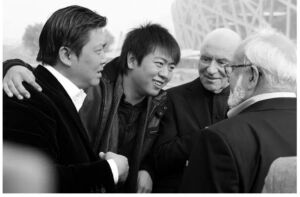
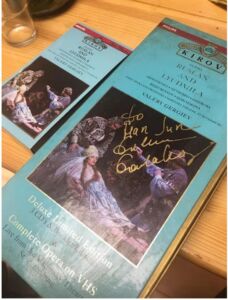

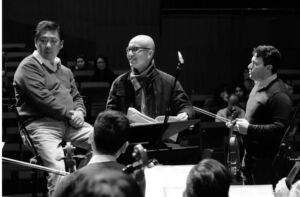

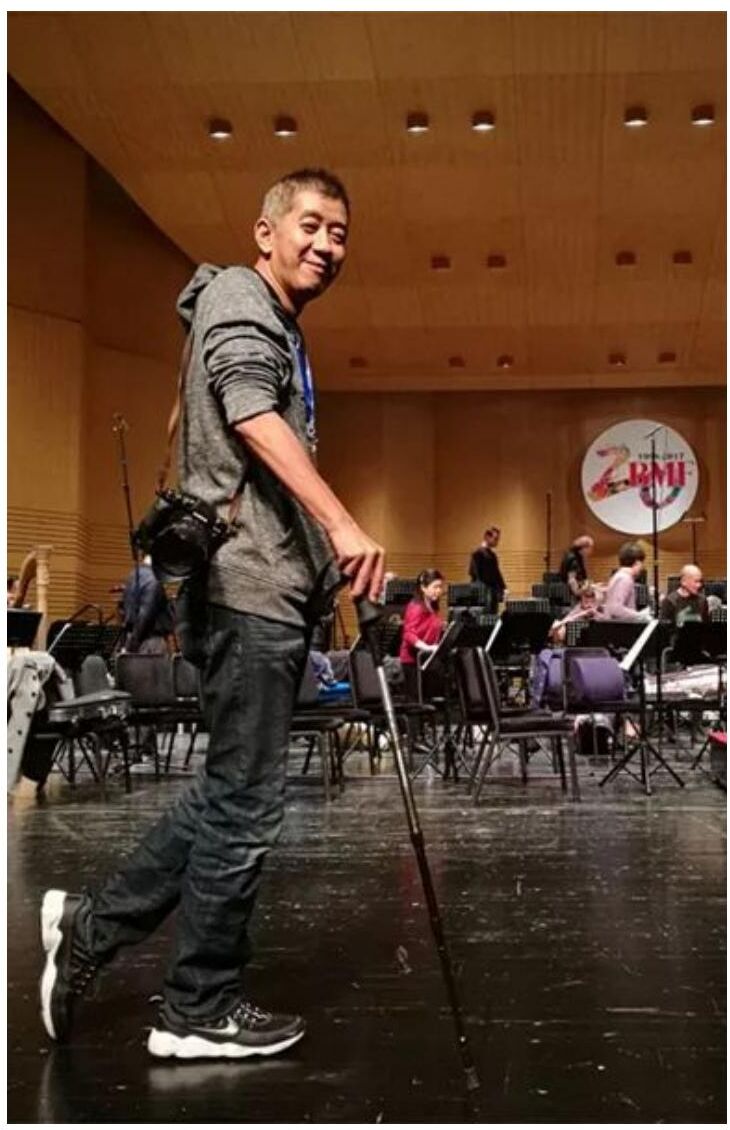

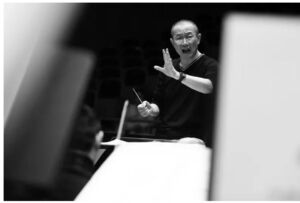 Han Jun is extremely meticulous in recording artists. It’s quite common for him to listen to a concert twice. “Because photography isn’t just about simple capturing. Good shots are really something that you might come across by chance and not something you can rely on pure luck.” Originally a music fan, Han Jun has a unique advantage. He would first familiarize himself with the style of the composition according to the program list and feel the rhythm and melody of the music. “Some people think that you can’t listen to the music while taking pictures. But actually, it’s the opposite. The more you listen to the music with a working mindset, the less likely you are to get distracted. Maybe we would fall asleep soon if we simply listened to a concert. But if you want to capture the cooperation and expressions of the conductor and the orchestra in the music piece, you must immerse yourself wholeheartedly in the music to know at which point they will communicate with each other, so that the figure of the conductor won’t be just a simple back view.” Especially for shooting at the performance site, it’s extremely important to familiarize yourself with the music piece in advance. “Some conductors usually only look at the score during the performance and seldom look at the violinists. Photographers are usually restricted to specific areas. Only by being familiar with the music can you know when the conductor might turn around to communicate with the musicians, and then you can capture the front view of the conductor.”
Han Jun is extremely meticulous in recording artists. It’s quite common for him to listen to a concert twice. “Because photography isn’t just about simple capturing. Good shots are really something that you might come across by chance and not something you can rely on pure luck.” Originally a music fan, Han Jun has a unique advantage. He would first familiarize himself with the style of the composition according to the program list and feel the rhythm and melody of the music. “Some people think that you can’t listen to the music while taking pictures. But actually, it’s the opposite. The more you listen to the music with a working mindset, the less likely you are to get distracted. Maybe we would fall asleep soon if we simply listened to a concert. But if you want to capture the cooperation and expressions of the conductor and the orchestra in the music piece, you must immerse yourself wholeheartedly in the music to know at which point they will communicate with each other, so that the figure of the conductor won’t be just a simple back view.” Especially for shooting at the performance site, it’s extremely important to familiarize yourself with the music piece in advance. “Some conductors usually only look at the score during the performance and seldom look at the violinists. Photographers are usually restricted to specific areas. Only by being familiar with the music can you know when the conductor might turn around to communicate with the musicians, and then you can capture the front view of the conductor.” Compared with the live performance scene, Han Jun prefers shooting rehearsals. “There aren’t as many restrictions as in a formal performance. Rehearsals and walk-throughs of the orchestra are definitely more likely to produce good shots.” Even aside from the limitations of shooting positions and angles, there is another point that cannot be ignored, which is to use the opportunities of rehearsals and walk-throughs to familiarize oneself with the music piece. “The camera makes a shutter sound. When the music is particularly soft or in a pianissimo section, it’s of course not suitable to press the shutter as it will disturb the audience watching the performance.” Getting the shots, getting autographs, and taking group photos, for a professional classical music photographer, this means “a job well done”. And it’s even more precious if there are the signatures of several masters on a CD.
Compared with the live performance scene, Han Jun prefers shooting rehearsals. “There aren’t as many restrictions as in a formal performance. Rehearsals and walk-throughs of the orchestra are definitely more likely to produce good shots.” Even aside from the limitations of shooting positions and angles, there is another point that cannot be ignored, which is to use the opportunities of rehearsals and walk-throughs to familiarize oneself with the music piece. “The camera makes a shutter sound. When the music is particularly soft or in a pianissimo section, it’s of course not suitable to press the shutter as it will disturb the audience watching the performance.” Getting the shots, getting autographs, and taking group photos, for a professional classical music photographer, this means “a job well done”. And it’s even more precious if there are the signatures of several masters on a CD.
